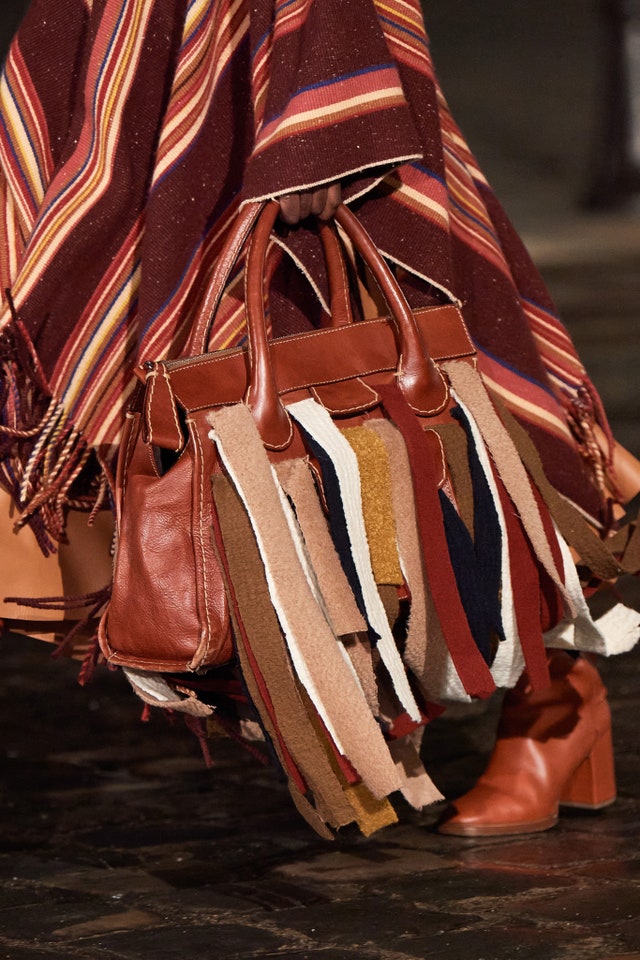Stella McCartney, Louis Vuitton, and other major fashion houses use old fabrics to sew new collections. Let’s get acquainted with Vogue’s story about “greener fashion.”
Fashion loves to repeat itself. There is ample evidence of this – the cyclical nature of trends, numerous references to the past and fashionable nostalgia, archival reprints, and the growing popularity of vintage collectors. Upcycling has even been hailed as the primary trend this summer. True, it is actively practiced mainly by young and independent brands (like Marine Serre, 1/OFF, and Patagonia). Speaking about large Houses, everything is different. They love to rethink forgotten ideas in new collections, but using old fabrics is not mainly.

Upcycled by Miu Miu
© Courtesy Miu Miu
Of course, there are some exceptions here. For example, the Prada Re-Nylon collection. Limited edition Upcycled by Miu Miu, based on the 1930s and 1980s dresses from vintage stores worldwide. The Maison Margiela Recicla line, where the things of different brands and years were rethought and altered (an analog of the Replica line, launched by the founder of the brand in 1994). Or the Hermès Petit h workshop, whose primary goal is to give new life to unnecessary and forgotten leftovers of materials.

Stella McCartney Repurpose, Resort 2021
© Courtesy Stella McCartney
Due to the pandemic, the illiquidity of the spring-summer 2020 collections cost the industry 125-143 billion pounds (this is more than double the figures for previous seasons). This marked the beginning of change. While the whole UK was in quarantine, Stella McCartney (one of the founders of the eco-movement in fashion) revised her approach to work and came up with a manifesto, “From A to Z.” Each letter illustrates the value of the brand and eminent artists helped to create them: Cindy Sherman, Olafur Eliasson, Urs Fischer, and others. Harsh statistics backed up the call to mindfulness. Did you know that “less than 1% of the materials used in clothing production are recycled – which means that 99% of all textiles in the industry go to landfill”? Or “if we continue to behave as we do now, the weight of textile waste accumulated between 2020 and 2025 will equal the total weight of the Earth’s population”?
“The A to Z manifesto, released last year during the lockdown, is the DNA of the brand, our plan for the future, a guiding alphabet that will help us take responsibility for our principles, actions and the chosen vector of movement,” says McCartney … – The letter R in the manifest stands for repurposing, which means that we seriously intend to give a second life to old materials. And those that were once used by themselves, and the waste of other industries. “

Chloé fall-winter 2021
© Courtesy Chloé
After years of the cult of novelty, recycling seems to be a return to basics. The creative director of the House, Gabriela Hirst, used 50 vintage Edith models to create the updated Chloé Edith bags. They have been reinterpreted and refreshed with materials from the Fall / Winter 2021 collection. Another example is Virgil Abloh: he created sneakers for the Louis Vuitton Spring / Summer 2021 men’s collection from leftover leather purchased in previous seasons. A similar story with the LV Be Mindful accessory capsule – it is also based on old materials.
Balenciaga’s Spring / Summer 2021 collection is 93.5% sustainable or upcycled. The Maison Michel Legacy Parade line is created from orphaned archival fabrics. Loewe, The Surplus Project bags were also made exclusively from leather leftover from previous collections. And that’s not all. In April, LVMH launched Nona Source, a virtual reselling platform where young designers and brands can buy leftover fabric and leather at 70 percent off the average wholesale price. Anything is better than throwing it away.
But back to Stella McCartney. “Personally, I am very fascinated by the idea of recycling,” she admits. “This is a space for creativity, an opportunity to create wonderful unique products – like our dresses from the “From A to Z” collection. We sewed them from strips of fabric accumulated over as many as nine seasons. In this case, there will be enough leftovers for five more. Therefore, I am absolutely sure that this approach is the future of fashion”.You may read about how to reduce waste in garment manufacturing here.



